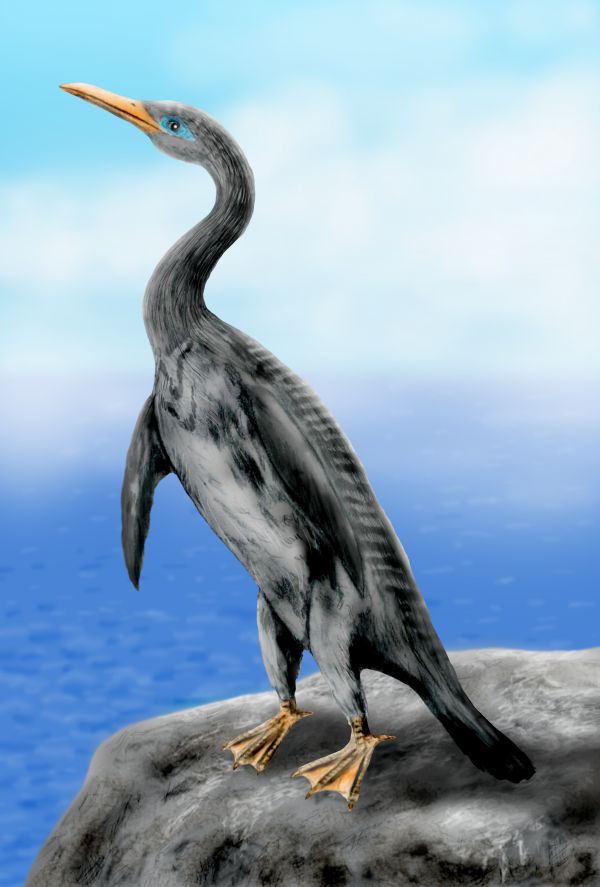- Plotopteridae
Taxobox
name = Plotopterids
fossil_range =Eocene -Miocene

image_caption = "Copepteryx "
regnum =Animal ia
phylum = Chordata
classis = Aves
ordo =Pelecaniformes
familia = Plotopteridae
familia_authority = Howard,1969
subdivision_ranks = Genera
subdivision = "Copepteryx "
"Hokkaidornis "
"Phocavis "
"Plotopterum "
"Tonsala "Plotopteridae is the name of an
extinct family of flightlessseabird s from the orderPelecaniformes . Related to thegannet s and boobies, they exhibited remarkableconvergent evolution with thepenguin s, particularly with the nowextinct giant penguins. That they lived in theNorth Pacific , the other side of the world from the penguins, has led to them being described at times as the Northern Hemisphere's penguins, although one new theory suggests that this group is a link between the penguins and the Pelecaniformes. Theirfossil s have been found inCalifornia ,Washington andJapan . They ranged in size from that of a largecormorant (such as aBrandt's Cormorant ), to being 2 m long. They had shortened wings designed for underwater wing-propelled pursuit diving (like penguins or the now extinctGreat Auk ), a bodyskeleton similar to that of thedarter and theskull similar to that of a sulid.The earliest known Plotopteridae species, "Phocavis maritimus" lived in the mid-
Eocene , but most of the known species lived in the early and mid-Miocene , after which it appears they went extinct. That they went extinct at the same time as the giant penguins of the Southern Hemisphere, which also coincided with the radiation of the seals anddolphin s, has led to speculation that the expansion ofmarine mammal s was responsible for the extinction of the Plotopteridae.References
* Howard, H. (1969): A new avian fossil from Kern County, California. "Condor" 71: 68–69. [http://elibrary.unm.edu/sora/Condor/files/issues/v071n01/p0068-p0069.pdf PDF fulltext]
* Olson, Storrs L.; Hasegawa, Yoshikazu (1979): Fossil Counterparts of Giant Penguins from the North Pacific. "Science" 206(4419): 688-689. [http://adsabs.harvard.edu/abs/1979Sci...206..688O HTML abstract]
* Olson, Storrs L. & Hasegawa, Yoshikazu (1996): A new genus and two new species of gigantic Plotopteridae from Japan (Aves: Pelecaniformes). "J. Vert. Paleontol." 16(4): 742-751.
* Schreiber, E.A. & Burger, J. (2001): Biology of Marine Birds, ISBN 0-8493-9882-7
* Mayr, Gerald (2005): Tertiary plotopterids (Aves, Plotopteridae) and a novel hypothesis on the phylogenetic relationships of penguins (Spheniscidae). "Journal of Zoological Systematics" 43(1): 67-71. [http://www.senckenberg.de/files/content/forschung/abteilung/terrzool/ornithologie/plotopteridae.pdf PDF fulltext]
Wikimedia Foundation. 2010.
